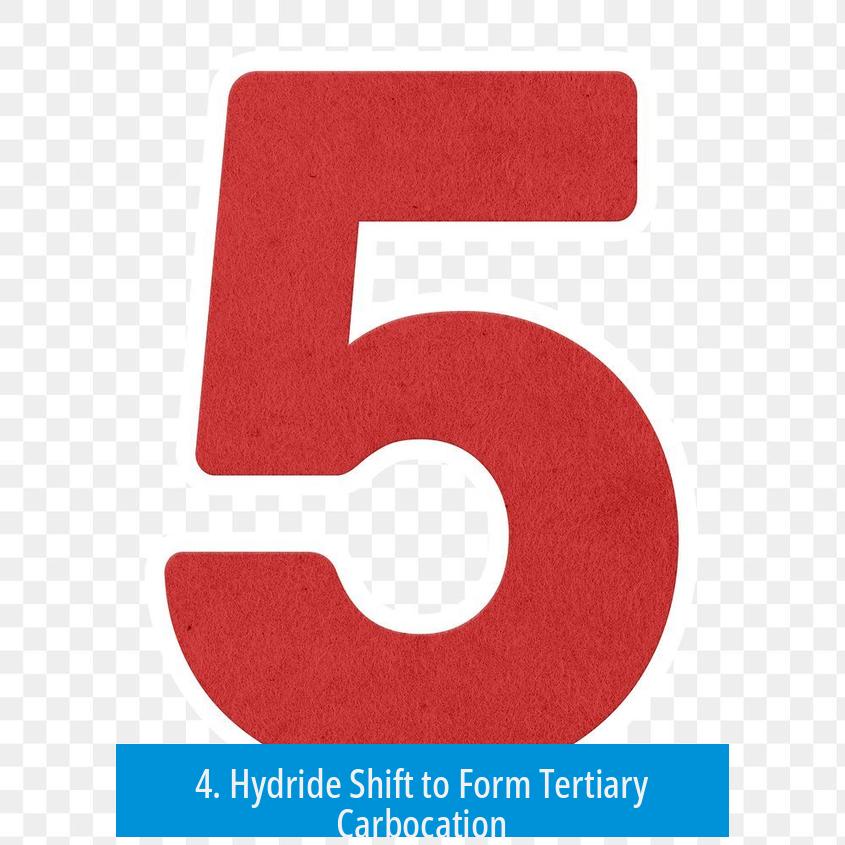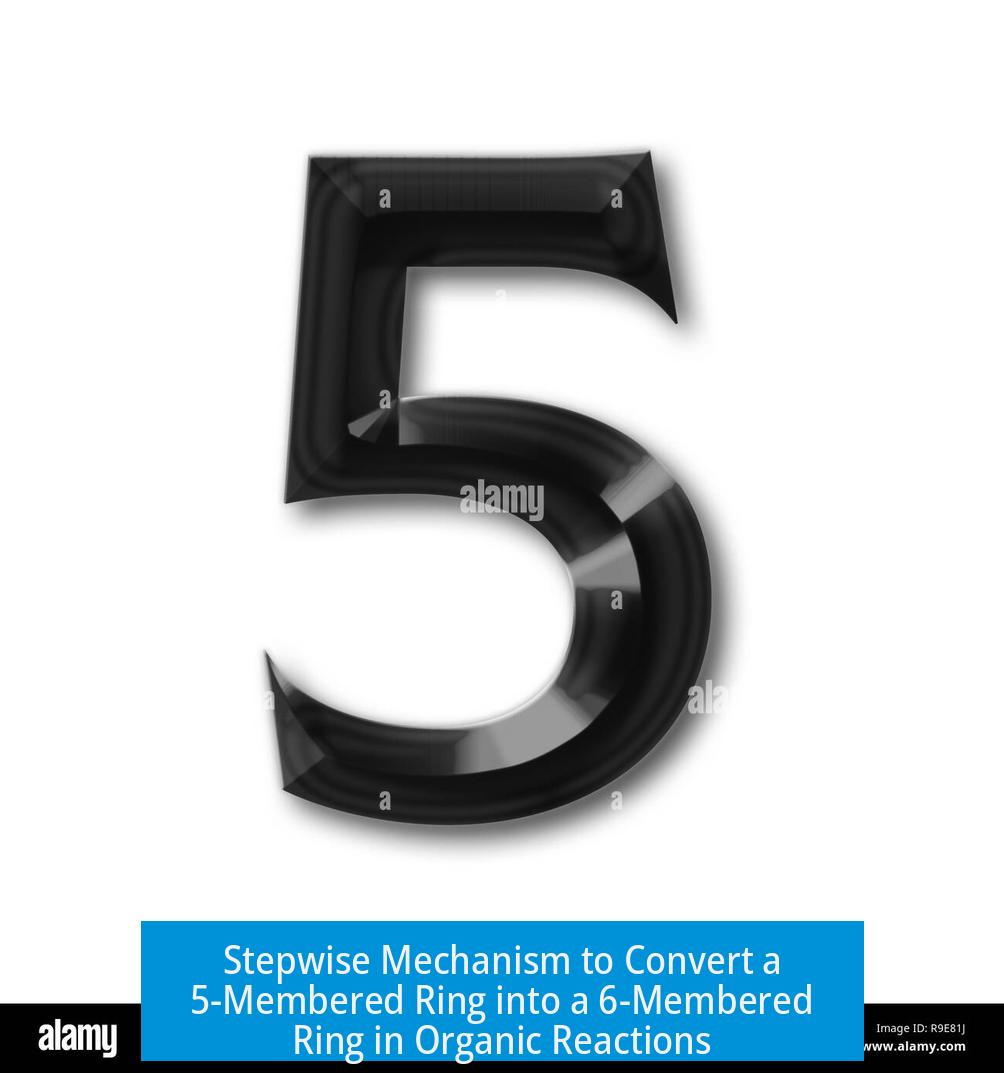Stepwise Detailed Mechanism to Convert a 5-Membered Ring into a 6-Membered Ring

The mechanism begins with protonation of the alcohol group, which changes it into a better leaving group, followed by the loss of water to form a secondary carbocation within a 5-membered ring. A key rearrangement then expands the ring to six members, stabilizing the carbocation. This is followed by a hydride shift to yield a tertiary carbocation. Finally, water acts as a base to form the double bond, and the acid catalyst regenerates to complete the reaction.
1. Protonation of the Alcohol Group
The reaction starts when the hydroxyl group is protonated by an acid, forming an oxonium ion (–OH2+). This protonation transforms the hydroxyl into a good leaving group, facilitating its departure.
2. Loss of Water and Formation of Secondary Carbocation in a 5-Membered Ring
After protonation, the water molecule leaves, generating a secondary carbocation within a 5-membered ring structure. This carbocation is an intermediate crucial for the subsequent ring expansion.
3. Ring Expansion from 5- to 6-Membered Ring
The 5-membered ring shifts to a 6-membered ring via a rearrangement that moves a bond or an atom adjacent to the carbocation. This ring expansion stabilizes the intermediate because six-membered rings generally possess less ring strain and greater stability than five-membered rings.
- The shift involves migration of a sigma bond to the carbocation center.
- This relocates the positive charge while enlarging the ring.
4. Hydride Shift to Form Tertiary Carbocation

The mechanism proceeds with a hydride (H-) shift. This rearrangement moves the carbocation from a secondary to a tertiary position. Tertiary carbocations are more stable due to increased alkyl substitution and hyperconjugation effects.
5. Water-Induced Elimination Forming a Double Bond
Water acts as a base and abstracts a proton adjacent to the carbocation. This elimination leads to the formation of a double bond, converting the carbocation intermediate into the final alkene product.
6. Regeneration of the Acid Catalyst
Lastly, the acid catalyst is regenerated by proton transfer between hydronium ion (H3O+) and bisulfate (HSO4-). This regeneration maintains the catalytic cycle and the acidic environment.
Summary of Key Steps
- Protonate alcohol to create a good leaving group
- Departure of water forms secondary carbocation in 5-membered ring
- Ring expansion rearranges 5-membered ring into 6-membered ring
- Hydride shift stabilizes carbocation by forming tertiary center
- Water acts as base, generating double bond via elimination
- Acid catalyst regenerates, sustaining the reaction environment





Leave a Comment